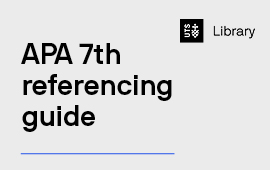Publishing research data has emerged as a key part of the scholarly communication process because it promotes transparency, reproducibility, and the validation of research methods.
Publishing research data refers to a set of practices that are more robust and sustainable than emailing files to your colleagues. These practices include submitting data to an online repository, portal, or aggregator. These services make the research data and metadata discoverable, accessible, reusable, and persistently available into the future. Most research institutions have their own repositories, and many disciplines have an established practice of contributing to a subject based repository, like Dryad, or TERN.
Options to publish research data
Research data can be published in several ways:
- sharing information about research datasets using rich metadata records in repositories, most often at institutions such as the UTS Research Data Portal
- syndicating those metadata records to Research Data Australia or discipline-specific portals or repositories
- formal publication in data journals
- informal publication such as via personal or commercial repositories or websites
The Library recommends UTS staff and research students use Stash, the UTS research data management service.
Reasons to publish research data
There are a lot of good reasons for sharing and enabling the reuse of data:
- encouraging scientific enquiry by enabling the validation of research methods
- maximising transparency and accountability through scrutiny of research findings
- promoting new opportunities for collaboration
- reducing the cost of duplicating data collection
- providing credit to the researcher as a research output in its own right
The number of funding bodies and publishers encouraging or requiring access to data is growing. In Australia, the Australian Research Council and the National Health & Medical Research Council strongly encourage you to share your data if you are the recipient of their grant funding. Some publishers will request a DOI for the data files underpinning the articles they publish. You can use Stash to request a DOI for your data. You should always check if the funding bodies and publishers you are working with, have policies on data sharing or publishing. It is important to be aware of these early on in your research project so you can make appropriate plans for the retention of and access to your data.
When to not publish research data
Not all data can or should be published, for reasons including:
- risks with confidential and sensitive data
- unethical to do so or could cause harm
- contractual obligations such as industry research
- your data includes third-party content that cannot be published
- unfeasible due to size or maintenance requirements
Contact the Library to discuss other ways to publish data that can maximise exposure of your results while meeting your ethical and legal obligations.
Publishing research data at UTS
Login to Stash and select Create Data Publication under the Publish and share box. The form will guide you through supplying important contextual information such as setting, access conditions, usage licensing and citation details. An existing data record and research data management plan is necessary to create a data publication (these can also be created in Stash).
The video below will show you how to create a data record for your research, as well as how to create a data publication, in Stash.
After submission, your data publication record will be reviewed and you will be contacted if any clarification is required. If you require a DOI for your data publication, contact eresearch-it [at] uts.edu.au (eResearch). Published datasets can be found on the UTS Research Data Portal.








